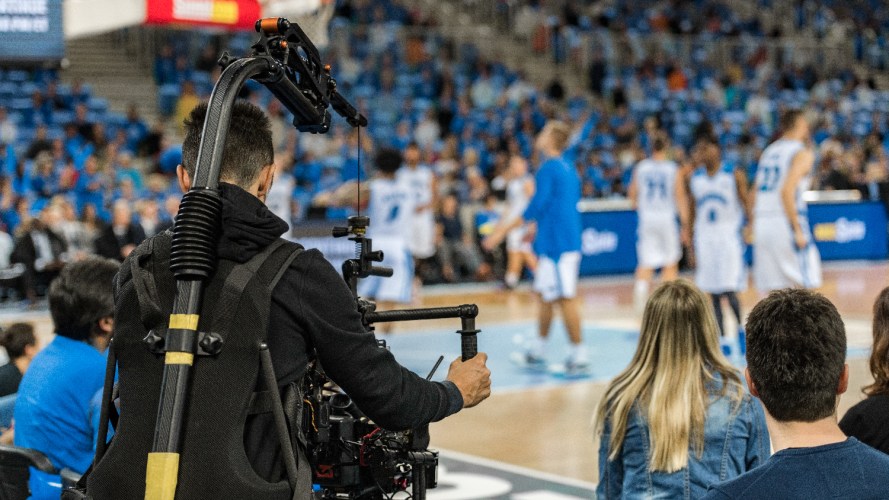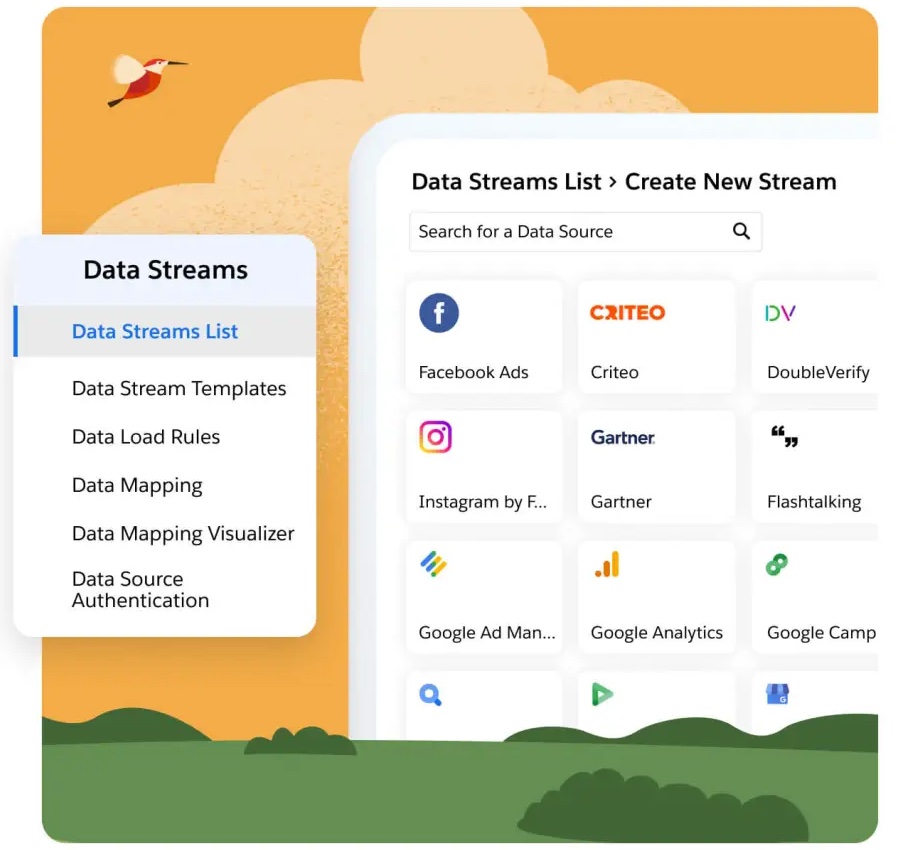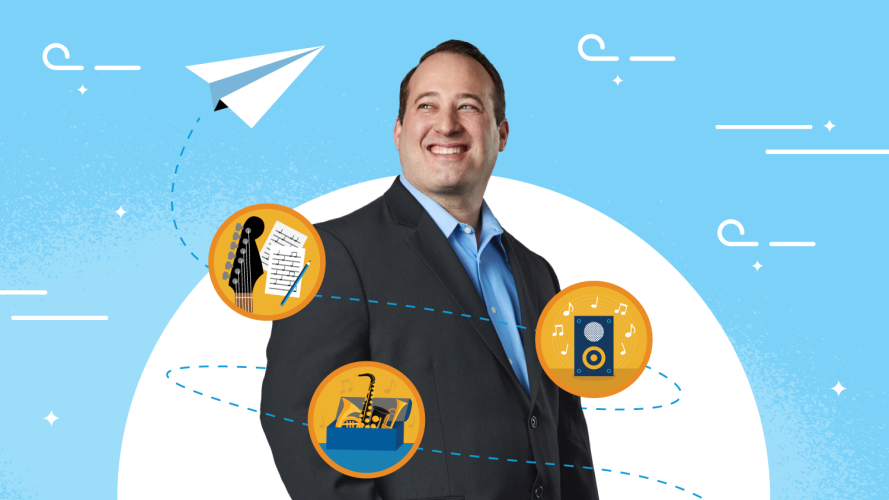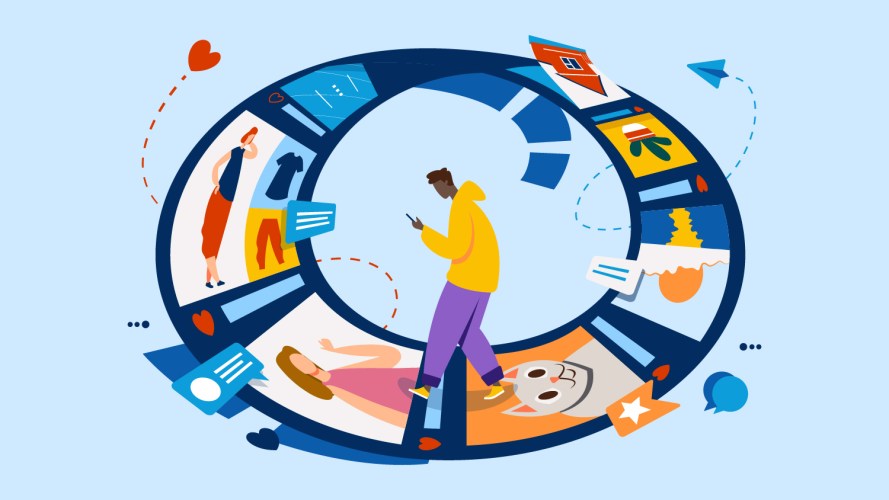3 Things All Marketers Can Learn From Sports Marketing



Pro sports teams are using AI, personalization, and journey optimization to connect with fans and stay ahead of the competition. Here’s what that means for the rest of us.

Nick Feldman
Every line of business is competitive, but in sports the line of business literally is competition. However, winning isn’t only about putting great players on the field. It’s also about building passion for the team and sport. This is why great sports marketing is crucial for connecting with new fans, understanding what existing fans want, delivering the content they need when they need it, and getting them to engage.
Does that sound familiar? Sports marketing has adapted to the same changing technology and customer expectations as in other industries. Though in some ways, the expectations are greater – marketers need to connect with fans before, during and after the games. It’s a round-the-clock job.
Want to take your marketing to the next level? We spoke with marketers from several storied sports franchises — Major League Baseball’s Texas Rangers, Serie A’s AC Milan, and the Indiana Pacers and Fever of the NBA and WNBA — about how to keep customers happy, loyal, and engaged.
The lineup for this blog
- Texas Rangers: Hit a home run by unifying your data
- AC Milan: Build great journeys, not just great individual experiences
- Indiana Pacers/Fever: Keep pace with personalization
- What you can learn from sports marketing
AI can be your MVP
Learn how you can act on near real-time insights with AI and unify data into a single profile — allowing you to deliver the best customer experience.



1. Texas Rangers: Hit a home run by unifying your data
Most businesses have multiple datastreams, but sports franchises have a particularly wide array of data sources. There’s the traditional channels of email, web, phone, in-person, customer service, and social media. And there’s also additional sources like loyalty programs, league-hosted sites or apps, their own custom apps, and partnership and affiliate programs.
As customers increasingly demand consistent and personalized experiences, it’s essential to have a single, unified view of each customer that draws from all your data sources. Naturally, for a sports franchise with even more data sources, this is even more of a hurdle, and even more valuable.
Let’s look at an example. The 2023 world champion Texas Rangers have been an MLB franchise since 1972. That’s a long time to build history – and a lot of different internal departments and customer channels, each with different incoming data streams. The Rangers marketing team needed to get that in one place and activate it.
The Rangers turned to Marketing Cloud Intelligence to unify all their data. This gave them flexibility to process MLB’s centralized data warehouse and their own social, advertising, and in-person data. Automating data prep freed up their marketing team to focus more on strategic and executional pursuits like long-term strategy and improving customer journeys.

Unifying their data also allowed them to use AI to generate actionable, data-driven insights on their fanbase.
“The single view of the fan is important for us because we want to zoom down to granular level,” said Jake Radelet, CRM & analytics manager for the Rangers. “It helps us understand what drives individuals to come to the ballpark and engage with our brand.”
This improved data intelligence is the backbone of the Rangers’ Fan 360 approach, giving fans more of what they want — a personalized experience, no matter where they interact with the team. The marketing team can now build more efficient marketing campaigns to boost single-game ticket sales and drive site returns and repeat purchases.
“Personalized experiences are huge for us because that drives fans to return to our ballpark and have that affinity with our brand,” said Radelet. “Delivering hyper-personalized experiences allows us to grow with our fans – from little kids and grow them into fans for life.”
How you can do this in your marketing
Your business probably doesn’t look exactly like theirs, but the principles are the same. We can even put them in baseball terms:
- First base: Unify your data streams to give yourself the most complete picture of your audience.
- Second base: Use AI to derive actionable insights from the largest, healthiest possible data pool.
- Third base: Act on those insights to generate both conversions and additional data through tools like A/B testing and customer segmentation.
- Home plate: Use AI analytics capabilities to keep learning from every marketing interaction, so your conversion percentage keeps climbing and your fans keep cheering. (Back to top)
2. AC Milan: Build great journeys, not just great individual experiences
Modern marketing is all about relationship building. It takes many forms, from lead nurturing to personalization to retargeting strategies. However, the essence is the same: reaching your customer once is fine, reaching them over and over is ideal.
For sports marketing, this is even more crucial. That entire business model is built not just on repeat customer loyalty but long-term customer passion and emotional investment.
The name of the game is delivering a series of great experiences, each building off the others. The core product – the actual games – can be unreliable (nobody likes a blowout), so it’s even more important to nail every other element of the customer’s experience. This means building comprehensive, flexible customer journeys, not just isolated experiences.
Building these journeys not only helps you keep the customers you have, it can win back the ones you’ve lost, bring in new fans, and protect your business against changing market expectations or technology.
Let’s look at another example. AC Milan has more than 120 years of football history. As a result, they have one of the most loyal and tradition-steeped audiences in sports. But even Milan isn’t immune to the changing state of marketing. They saw an opportunity to optimize season-ticket sales while providing their loyal fans with the customer experiences they deserve.
The marketing team focused on ways to fully take advantage of the modern digital ecosystem and add more options for fan engagement.
Using Journey Builder, they did just that. The new journeys reached fans on more channels than before, engaged them multiple times with contingent messages based on their behaviors, and built on purchases they’d already made, which led to soaring engagement and conversion rates.

They experienced the fastest sellout in their history — with tickets gone within just 40 days, but that was far from the only impact. By combining Marketing Cloud with Sales Cloud, they could finally provide that holistic fan experience. A ticket sold is no longer the end of the journey, but the beginning.
Fans who attend a specific game might receive a personalized offer in their email for a special deal on the jersey of the player who made the winning shot at that very game. That sort of marriage between what’s best for the fan and what’s best for the business is the sort of thing that sets successful franchises apart, and keeps their stadiums full even if the team has a down year.
The numbers backed up the success of this new approach, too. Since starting to use Marketing Cloud in July 2020, AC Milan has seen their marketing ROI rise by more than 40% year over year. Their ticket sales are up 16%, and their email open rates are up 26% year over year.
How you can use this in your marketing
Your business probably doesn’t revolve around individual moments like Milan’s, but you can still learn from this great sports marketing example. If you want to think of it in soccer terms:
- Personalization is your forward, your most effective means of scoring: It makes every step on that journey more likely to convert.
- Integration is your midfield, connecting your front and back lines: By connecting your marketing operation with sales, CRM, support, and more, you give all your teams a better understanding of your customer.This also gives your customer a better cross-channel experience with your brand.
- Multi-channel journey orchestration is your defense, making sure your customers don’t slip past you: This journey used to just be an all-or-nothing “sale or no sale” interaction. Now, you can have an ongoing conversation that engages your audience with multiple interactions at strategic times, with each interaction building on the last.
- Automation is your goalie, your best line of defense against the challenges posed by your opposition: It frees up the rest of your team to do what they do best, instead of worrying about covering potential gaps that are outside of their core skillset. (Back to top)
Get in the game today
Is your marketing tech not coming through when you need it most? Relegate it — and see what Marketing Cloud can do for you.



3. Indiana Pacers/Fever: Keep pace with personalization
All your fans have exactly one thing in common: they love your team. But beyond that, they come in every demographic.
When we’re talking about teams at the scale of the NBA’s Indiana Pacers and WNBA’s Indiana Fever, we’re talking about hundreds of thousands of individual fans. Keeping track of each one of them separately, let alone engaging with each one of them exactly on their preferred terms, is a tall-enough-to-dunk-without-jumping level task — but not an impossible one.
The Pacers and Fever recognized that personalization was the key to increasing fan engagement. By using a combination of Sales Cloud, Journey Builder, and Marketing Cloud Personalization, their marketers modernized their outreach and connected with fans on a deeper level than before.
In order to personalize, you need to first understand your current and potential customers. The Pacers invested their time and energy into the platforms that would help them capture first-party data directly from their fans. By being strategic with the questions asked, they derive insights they can act on through email, mobile, and web personalization.
One of their biggest wins came from web personalization. Creating “exit intent” messages to encourage visitors to take action before leaving the website.
When a fan is browsing the website, specifically on the Single Game Tickets page, and they go to leave the site, they are shown a pop-up message with a call to action, such as, “Hold Up! Don’t Forget to Purchase Your Tickets for the Pacers vs. Pistons Game.”
Because Personalization (another Marketing Cloud tool) gathers visitor behavior behind the scenes, including mouse movement of leaving a page, the Pacers can use this action as an opportunity to entice a purchase. So far, the Pacers attribute a 10% increase in click-through rates to their exit disruption campaign, as well as a 3X increase in single-game revenue this season over last.
The Pacers also found other ways to personalize throughout the customer journey. They created smart segments based on data collection and preferences, delivering messages at the right time for early and late buyers, and adding in channels like SMS to increase engagement with their fans. Besides the obvious financial benefits, this approach also gave them multiple new chances to engage their audience and deepen their relationship with their fans.
How you can use this in your marketing
Even if your customers aren’t sharing your company’s highlight reels, they can still help you build better journeys. Our State of the Connected Customer report found that 65% of customers expect brands to adapt to their preferences. The Fever and Pacers’ sports marketing playbook shows you how to reach customers on their terms:
- Use your data like a 7-foot star center: Your data anchors the rest of your operation. With clear analytics and engagement scoring running off that foundation, it opens up additional opportunities for the rest of your team to capitalize. Everything else you do with lead gen and nurturing and retention flows from there.
- Use automation as your do-it-all MVP forward: With automation doing the heavy lifting, your team is free to focus on what they do best. In basketball that might be three point shooting or timely baseline cuts. In marketing, it’s more likely to be strategic planning and conversion opportunities. But either way it’s the key to efficiently putting more points on the board.
- Use voluntary first party data as your point guard, reading the defense and dictating the offense: In marketing terms, this means correctly interpreting the information your customers volunteer to make the right decisions for your team. By accurately reading the first-party data your customers are giving you, you’re set up to deliver the most efficient possible personalization. That could be as basic as customizing send times, or a more elaborate scheme like custom exit messages or cart abandonment campaigns. (Back to top)
What you can learn from sports marketing
Marketing can be a lot like sports in that you’ll have the most success with a good strategy, an engaged audience, and a team that’s working off the same playbook.
You can write that playbook with a strong data foundation, and you can use journey orchestration to make sure your strategy executes and adapts to every matchup, while personalization helps you turn customers into true-blue fans.
Like any good teammates, all three of these principles are much stronger together than they are on their own. Putting them all into play together so you can deliver a truly personalized journey to every customer is how marketers keep winning — even when the competition gets tougher. (Back to top)
Get the most out of your data
Learn how Data Cloud helps marketers deliver experiences that build lasting relationships with customers.


























